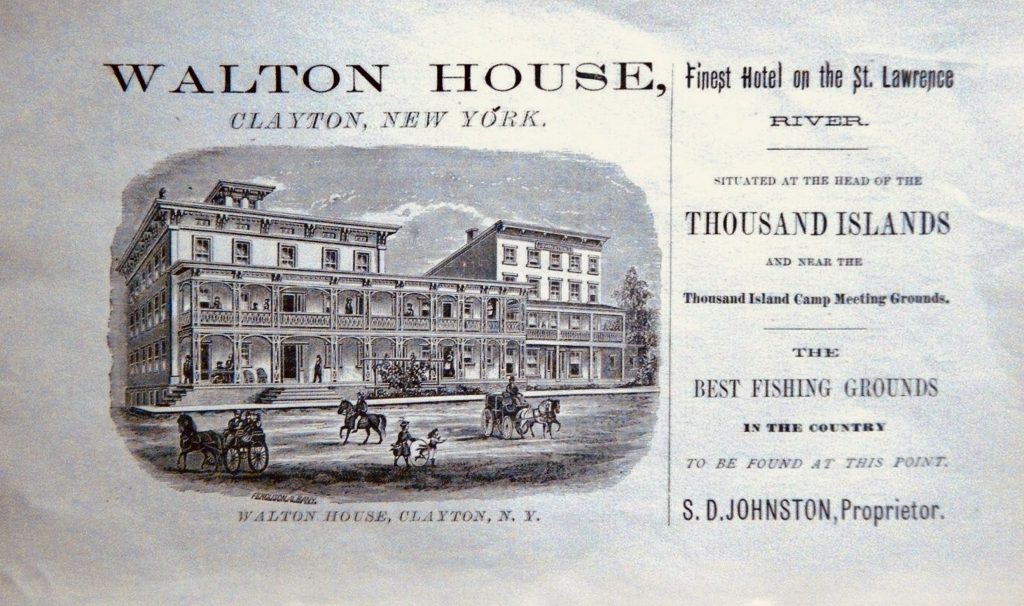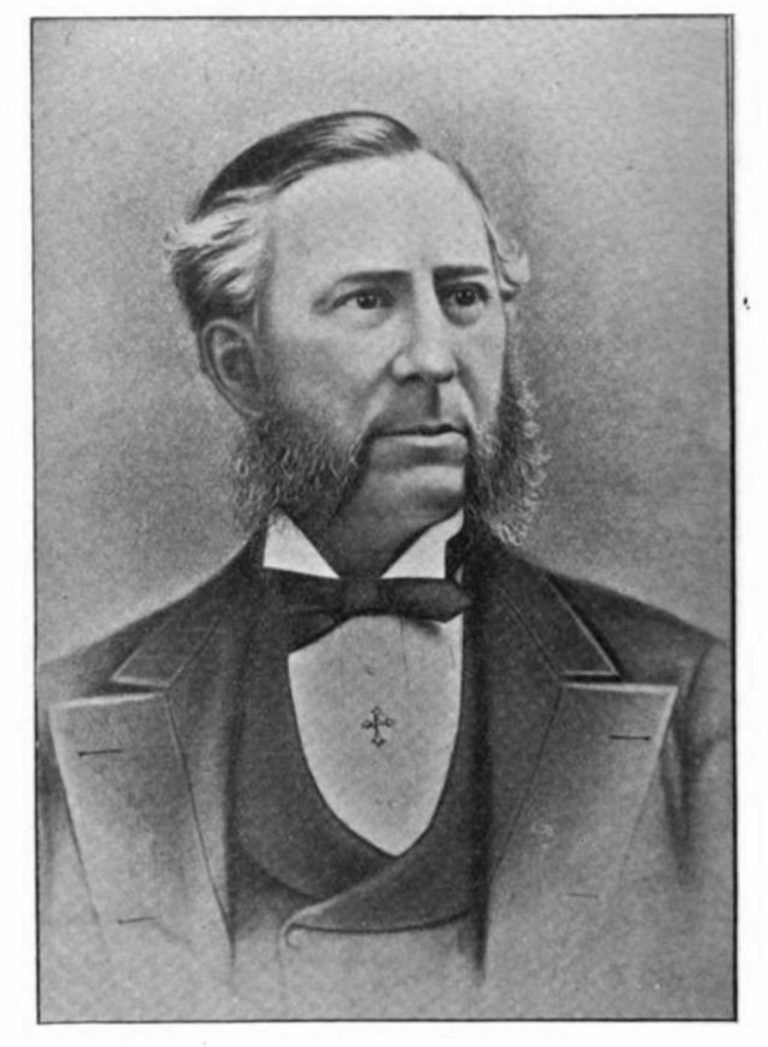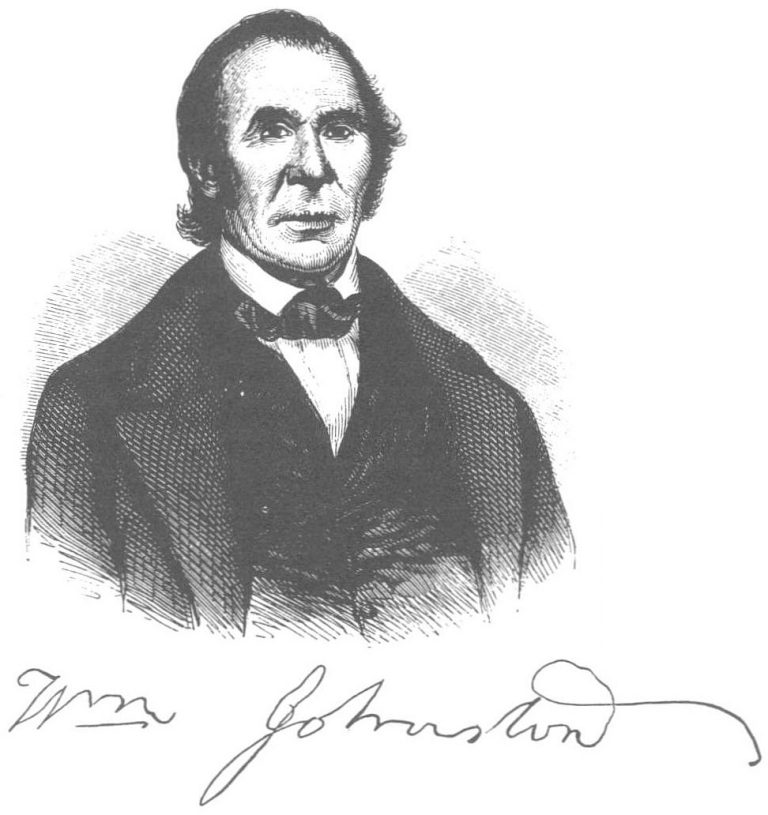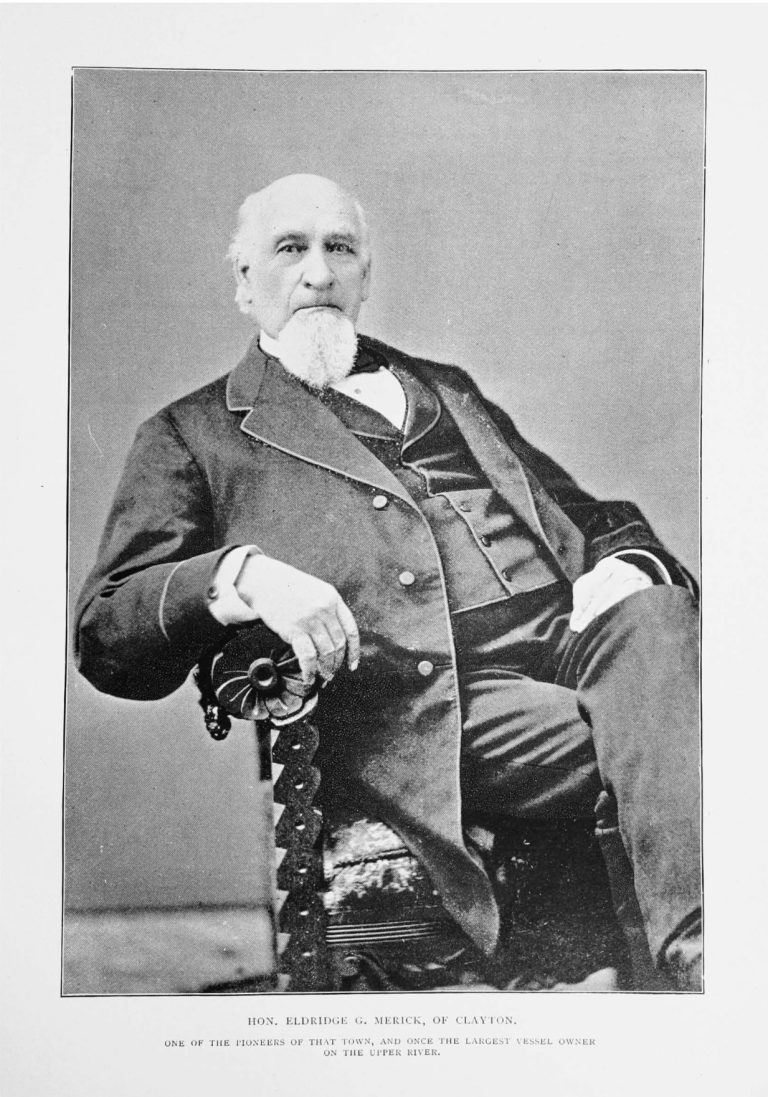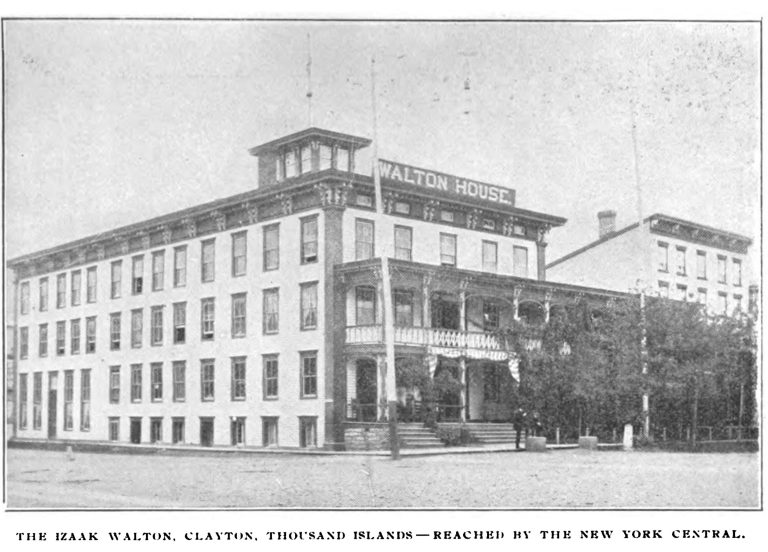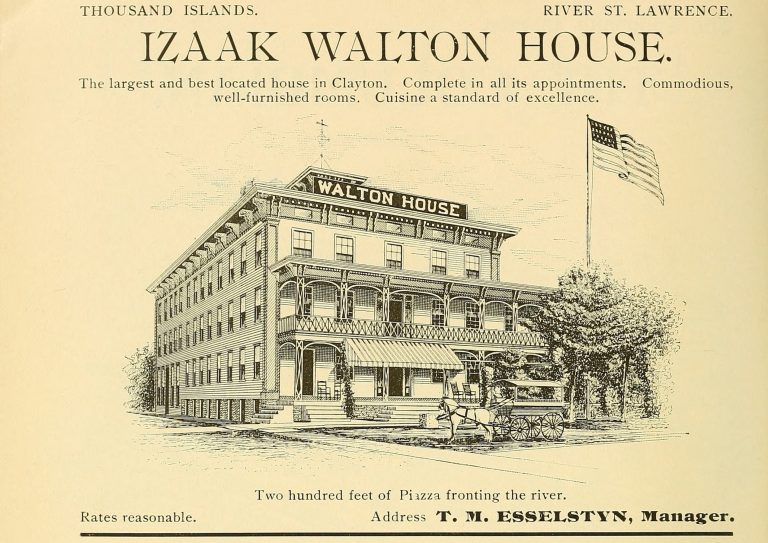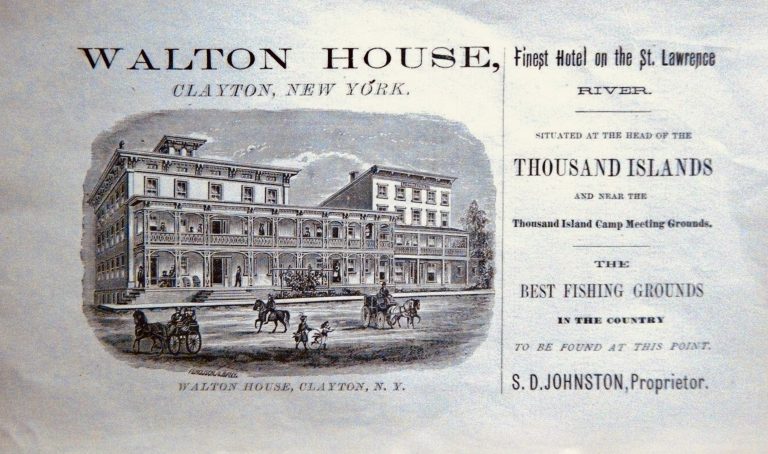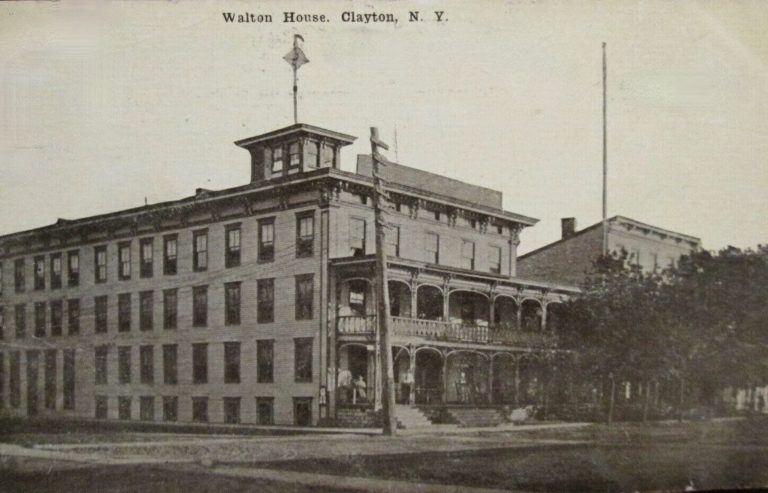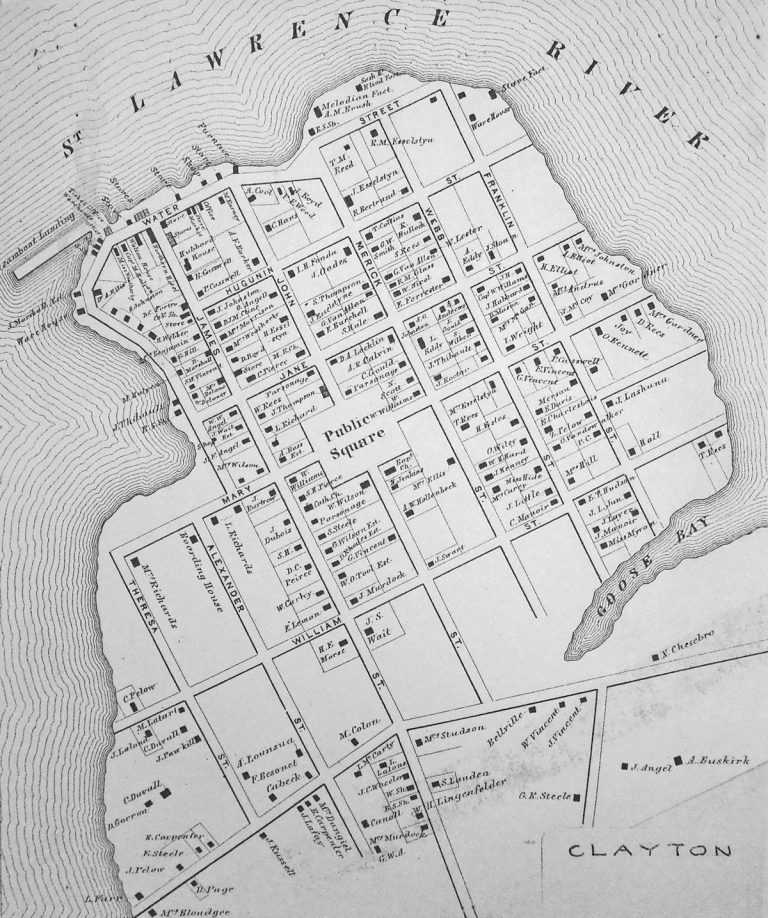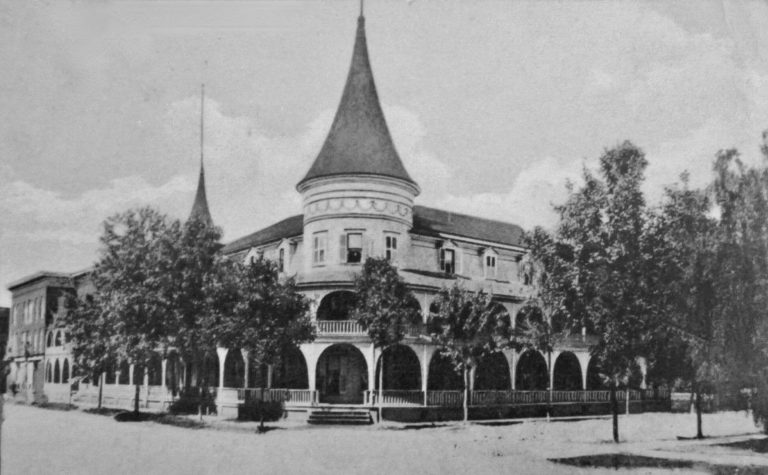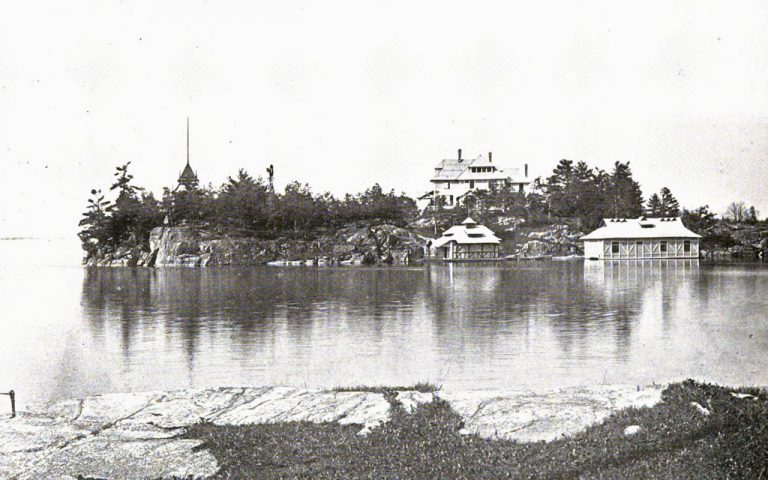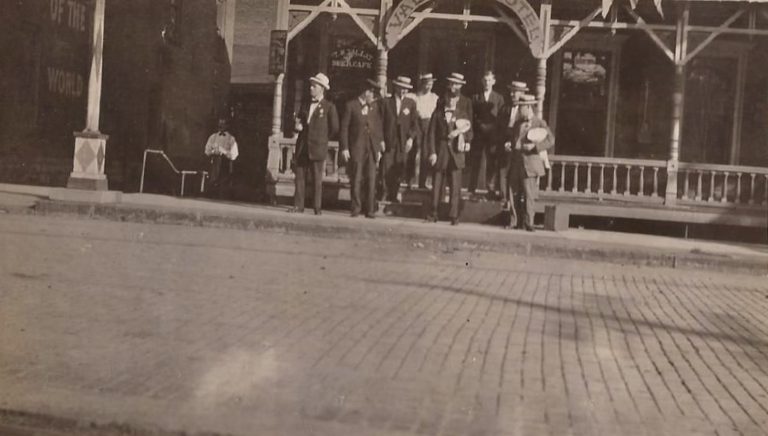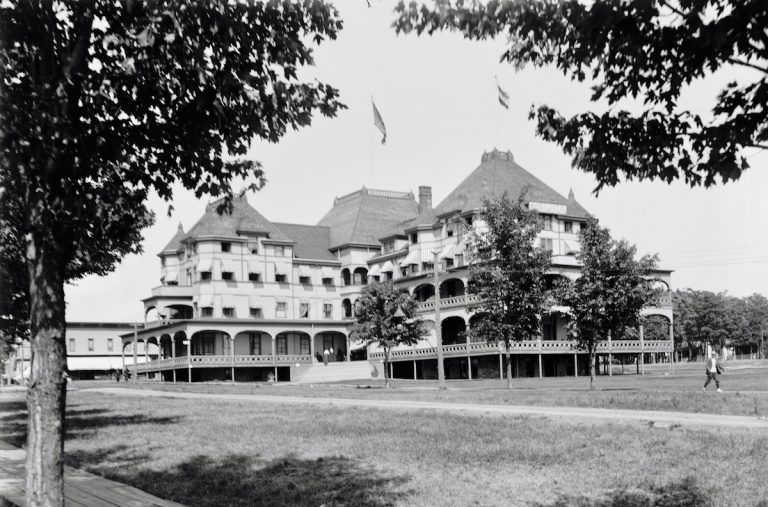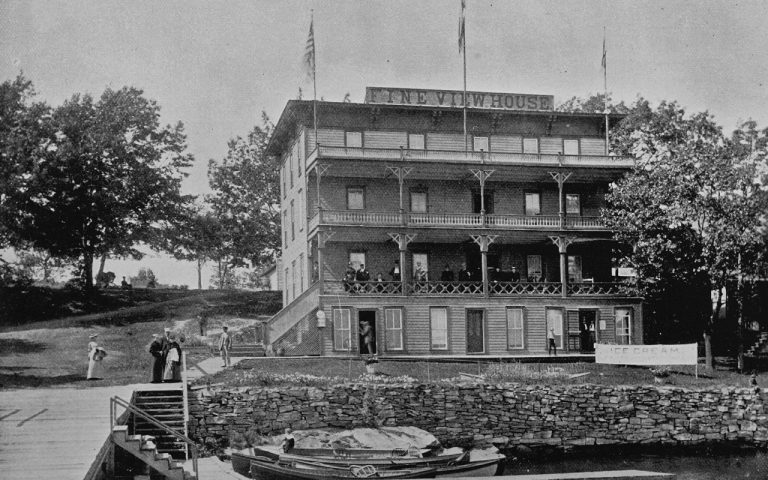The Interesting Genesis of the Walton House in Clayton, Operated By Stephen Decatur Johnston For Many Years
The history of the Walton House in Clayton, N.Y, goes back to at least 1849 when Stephen Decatur Johnston, son of famous pirate William “Bill” Johnston, began operating it as such after his wife, Maria Johnston, acquired the property from her uncle, General William H. Angel. For the story of its genesis, however, it’s beneficial to go back a while further when the village was named Cornelia, and the property was but a small piece of Vincent Le Ray de Chaumont‘s estate.
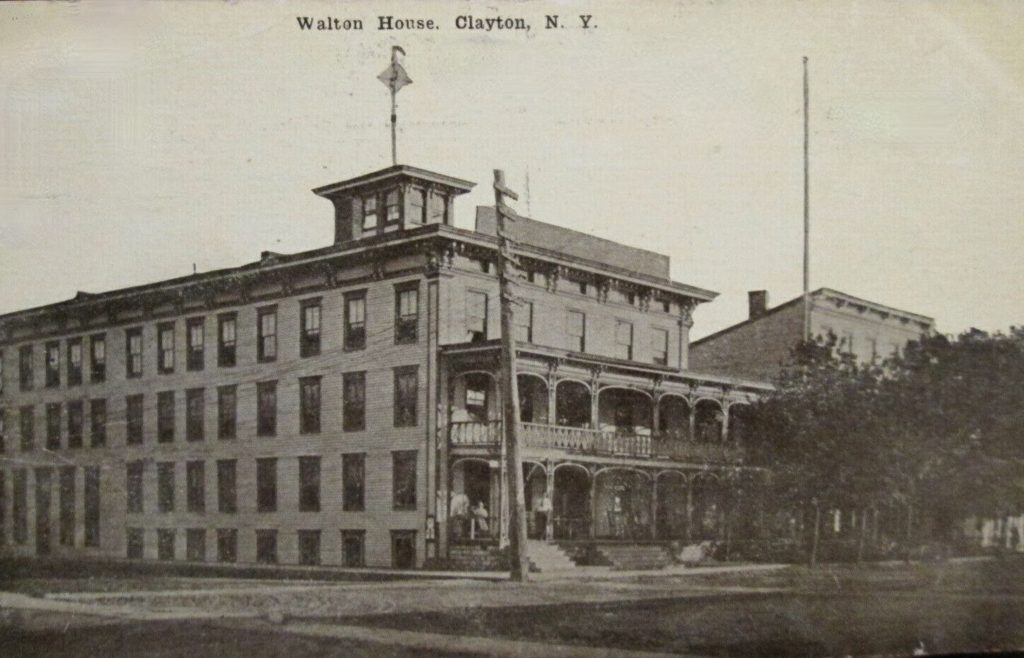
It was in 1830 that Jesse Smith acquired several lots fronting the St. Lawrence River from Le Ray. Although there was a hotel on one of the lots, The Northern Hotel, it was reportedly moved to another location. Smith financed General Angel and Eldridge G. Merick with developing the village, and it’s presumed this is how Angel acquired the land.
In Arthur B. Strough’s Article, Walton House, Clayton, Its History, reprinted in the June 23, 1930 edition of the Watertown Daily Times, shortly after the Walton House came tumbling down to make way for a gas station, Strough noted–
On September 19th, 1853, William H. Angel deed the westerly part of the five lots to Maria Johnston. It is mentioned as the “Stone House Lot.” The stone house was the original “Walton House” and Maria Johnston was the wife of Stephen Decatur Johnston who kept hotel there early as 1849. This shows that the stone part of the hotel was constructed between 1839 and 1849.
The mechanic or builder of it was Thomas Angel, an uncle of Mrs. Johnston who was a daughter of James F. Angel, brother of General William H. Angel.

Meanwhile, the Northern Hotel, situated near the stone house that was the original Walton House, went through a number of ownership changes in the ensuing years. Eldridge G. Merick disposed of the property in 1850 to Schuyler S. and Lamenta Benjamins, and their last name apparently knew the hotel through their ownership until 1859, when they conveyed the property to Julia Ann and Capt. Archibald Marshall, only to have the Benjamins re-acquire the property three years later, then conveying it to Mrs. Bridget Halpin, the wife of Captain Halpin, who Strough notes “was the master of the celebrated Barque ‘General Burnside‘ for many years.”
As Strough mentions with almost every owner who happened upon the Northern Hotel, the Halpins were not hotel people, and in 1868, the property came to be owned by Stephen Decatur Johnston. About two years later, in 1870, Johnston, apparently known then as “Dick,” joined the two hotels together and operated them under the “Walton House,” which helps explain its varying sizes in photos of different eras.
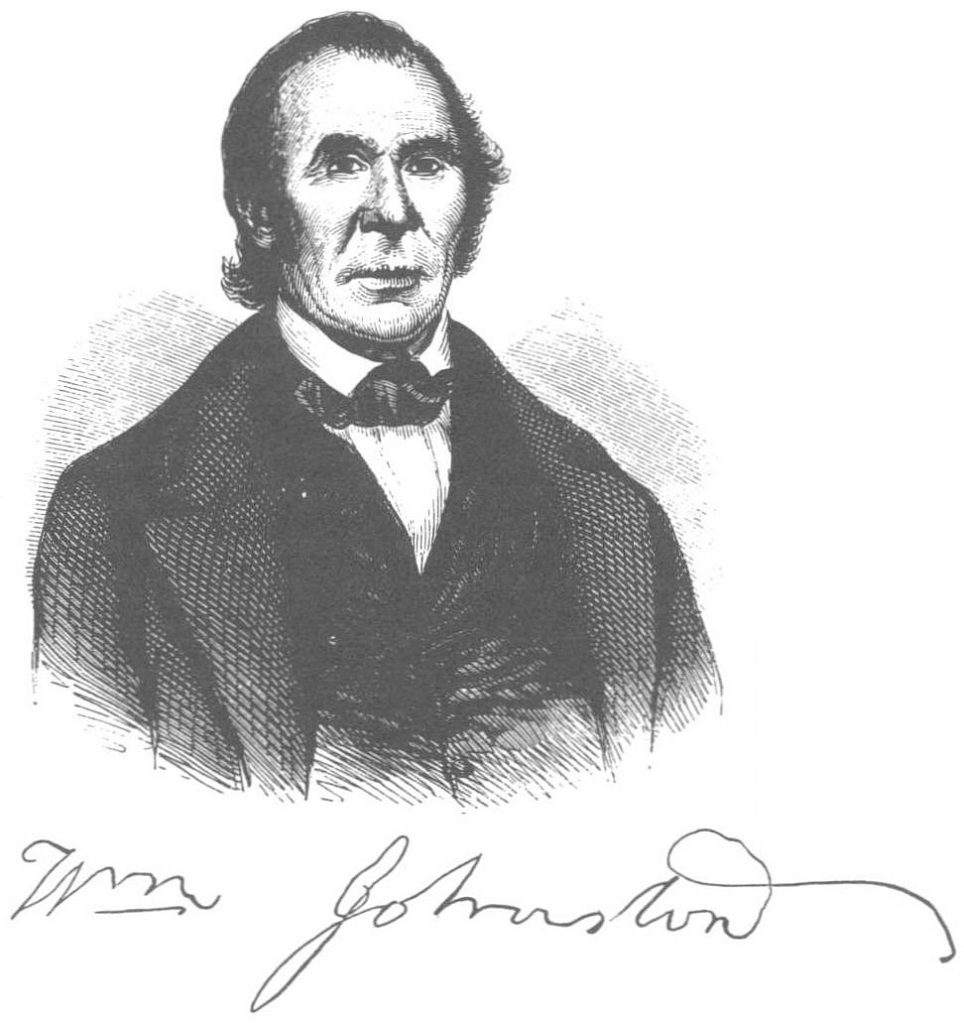
1870 was the year of William “Bill” Johnson’s death. He, Thomas Angel, and numerous aged and needy people were cared for by the Johnston’s at Walton House over the years during the later stages of their life. Captain Henry Johnston, of no relation, wrote in his memoir a snippet that was published in The Times on February 23, 1943, about seeing Bill Johnston near death at the Walton House when he was but a boy–
When I was about eight years old my chum was Edward Brockway whose mother was cook for Decateur Johnston at the Walton House. I remember that we were one day at play on the north end of the hotel on the first floor and we went into the room where Mr. Johnston was sick in bed—I refer now to “Bill” Johnston. We were making too much noise and his daughter-in-law, Mrs. Decateur Johnston sent us out into the yard to play. That was the one and only time I ever saw “Bill” Johnston. A few months after he died on February the 17th, 1870, aged 88 years.
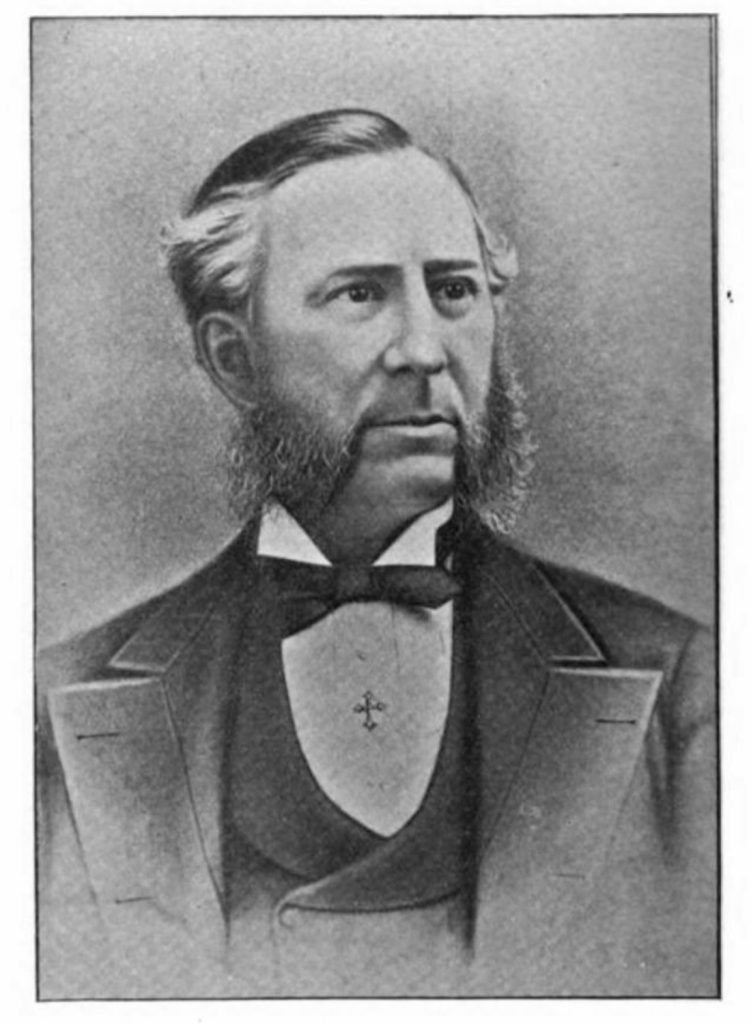
Five years later, Stephen Decatur Johnston built another addition to the Walton House in April. The location, then occupied by a large, unsightly barn, was yet another sign of the success of the hotel as The Times stated–
…in making additions to his hotel from time to time, he has made it assume huge proportions. Yet, he lacks room during the summer months, when his many guests pour in upon him, and he proposes to make an extensive addition immediately in order to meet the wants of pleasure-seekers who annually visit Clayton and stop at the Walton House.
The hotel’s next improvement was in something taken much for granted today: water. In 1877, the Walton House was enabled for a “permanent supply of pure water” via an underground connection with the St. Lawrence River.
Two years later, famous comedian and actor Harry Beckett, the president of The Lambs Club, the long (and currently) running New York City social club of artists involved with the theater. Beckett was the first comedian to play in Wallack’s Theatre in New York and was said to have planned to stay the better part of the summer at Walton House, where it was rumored he’d be visited by Messrs. Wallack and Mr. and Mrs. Theo Moss of Wallack’s theater. Unfortunately, Harry passed away a year later at the young age of 41 after falling ill after one of his performances.
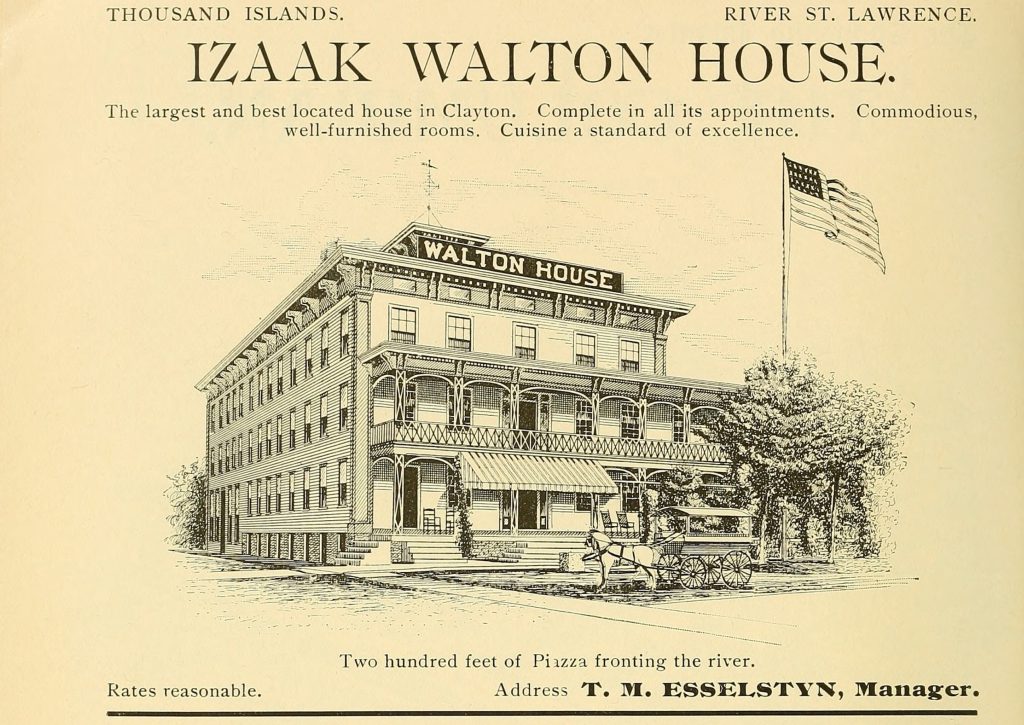
In 1880, Stephen Decatur Johnston and W. N. Smith, New York, purchased Bartlett’s Point across the bay. The point, rising some 80 feet above water level, consisted of about 25 acres. It would later become home to the Manatauk Hotel and its park association, neither of which proved to be successful, though the hotel and park came several years after Johnston’s death in 1893 at the age of 72.
As Mr. Johnston and his wife grew older, Johnston put the Walton House up for sale after his wife became ill in 1885. Though he was able to operate it for a few more years, he did not renew his liquor license that year and ran the hotel strictly as a Temperance House.
After his death in 1893, the Walton House passed to his son-in-law Captain Thomas M. Esselstyn who ran it for several years before it sold to former Watertown Mayor Hiram Foote Inglehart in 1899 who previously leased a number of area hotels including the Columbian, Westminster, and Central Park hotels. Hiram didn’t have it very long, as it was conducted by J. T. Raplee, Watertown, who put forth considerable improvements but did not pay the mortgage owed to Flower & Co., who shut it down in September of 1900. The property then passed to Alden F. Barker through the foreclosure of a mortgage on it of $9,800.
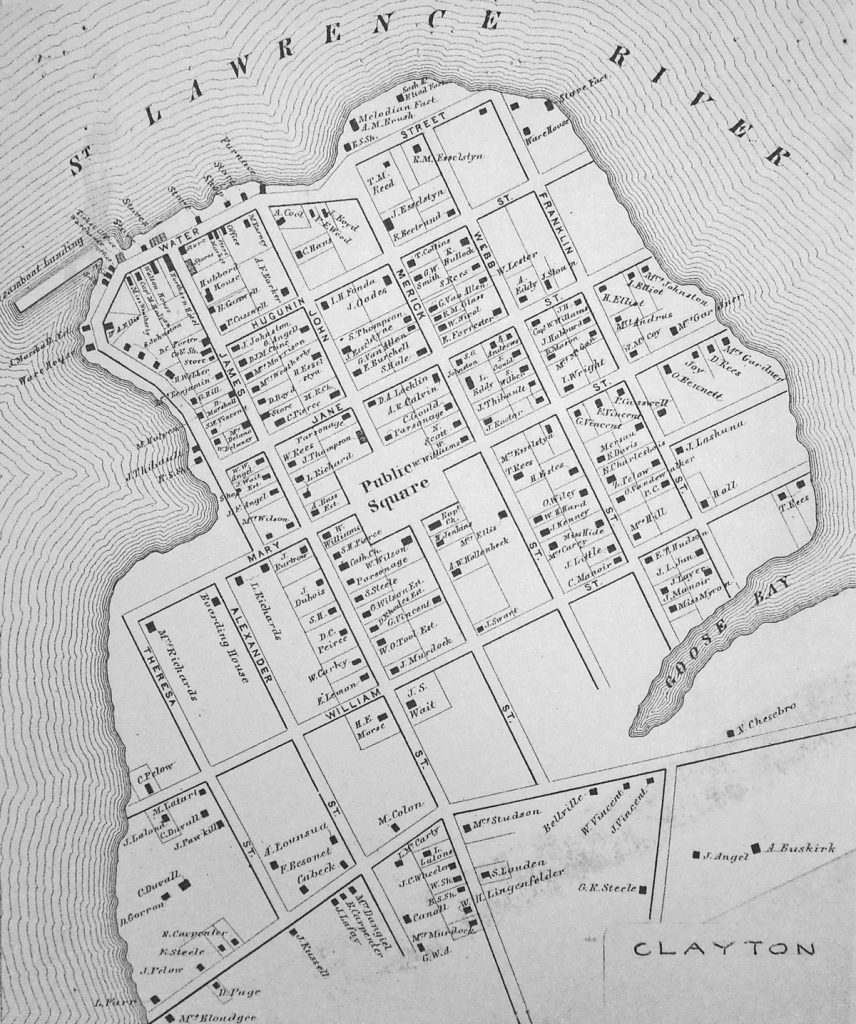
By December of 1917, the headlines in The Times were calling the Walton House a relic of the past, yet again to be sold under foreclosure—
The old Walton House is down out, a relic of the past, useless as a modern summer hotel, and condemned to be disposed of at mortgage foreclosure sale.
Four years before the Civil War Clayton, and the Walton House, was known throughout the length and breadth of Dixie land, from Richmond to New Orleans, many of its patrons of these days being aristocratic slave owners, their families and servants, and besides those, there were famous men and women from all over the country and from foreign lands that sought entertainment under its roof.
Twenty-five years ago the Walton began to decline in its upkeep and patronage, larger and more modern down river hotels drawing heavily on its business, the advancing age and financial affairs of Mr. Johnston forbidding further effort to regain its lost popularity. Since his death it has been leased, and sold, and leased again and again, each manager leaving it in a more rundown condition than before.

Despite the negative press, the Walton House auctioned $8,695.46 to Frank L. Hall of Clayton, the only bidder on the property. The property was then managed by Hiram Fred Inglehart of Watertown, the son of Hiram Foote Inglehart, who also managed the Westminster Hotel at the time. The hotel underwent extensive renovations and a name change to the Walton Inn. Despite steady success through the mid-1920s, the hotel was eyed for replacement by 1927, 12 years after a plan was revealed to build a $400,000 fireproof hotel in its place.
Finally, in 1930, the property was sold by Andrew J. Keough to the Standard Oil Company of New York. Demolition began in May of that same year, with a forthcoming gas station at the corner after the property was given a ten-year lease to the Black River Oil Company.
Today (2023), the location of the former Walton House is home to Mar’s Pizzeria.
